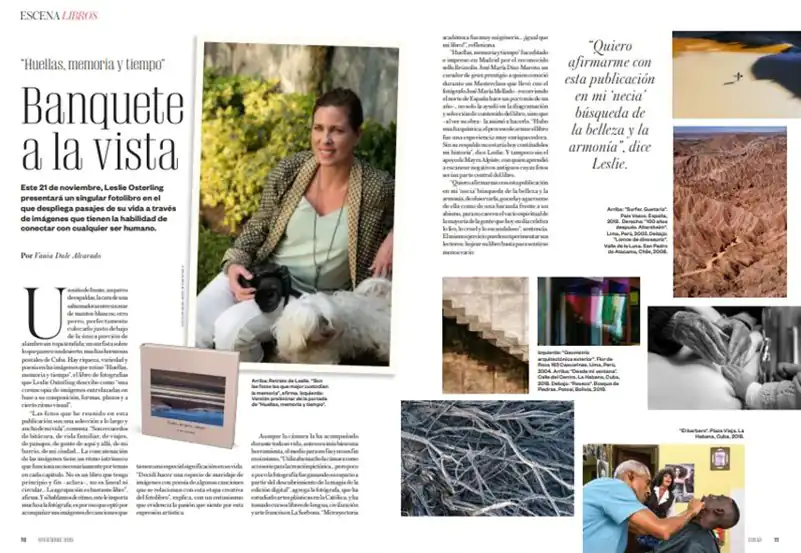Published: 14.11.2019
Banquet in sight
This November 21, Leslie Osterling will present a unique photobook in which she unfolds passages from her life through images that have the ability to connect with any human being.
By Vania Dale Alvarado
A child from the front, a dog from the back; the face of a sahumadora among a sea of white cloaks; another dog, perfectly placed just below the only piece of wire with no clothes hanging on it; a surfer on what looks like a desert; many beautiful postcards from Cuba. There is richness, variety and poetry in the images brought together by «Huellas, memoria y tiempo», the book of photographs that Leslie Osterling describes as “a cornucopia of intertwined images based on their composition, shapes, planes and a certain visual rhythm”.
“The photos that I have gathered in this publication are a selection throughout my life,” he says. “They are memories of logs, family life, trips, landscapes, people from here and there, from my neighborhood, from my city… The concatenation of images has an intrinsic rhythm that works not necessarily by themes in each chapter. It is not a book that has a beginning and an end –she clarifies–, it is not linear or circular… The grouping is quite free”, she affirms. And if we talk about rhythm, this is very important to the photographer; That is why she chose to accompany the images of her songs that have a special meaning in her life. “I decided to do a kind of marriage of images with poetry of some songs that relate to this creative stage of the photobook,” she explains,
Although the camera has accompanied her throughout her life, before it was more of a tool, the means to an end and not an end in itself. “I used the camera a lot as an accessory for pictorial creation… but little by little photography was gaining its space from the discovery of the magic of digital editing,” adds the photographer, who has studied fine arts at the Catholic University, and has taken free courses in French language, civilization and art at the Sorbonne. “My academic career was very sui generis… just like my book!” she reflects.
“Huellas, memoria y tiempo” was edited and printed in Madrid by the renowned Brizzolis label. José María Díaz-Maroto, a highly prestigious curator whom she met during a Masterclass she took with the photographer José María Mellado – touring the north of Spain a little over a year ago – not only helped her in the layout and selection of content of the book, but rather – seeing her work – encouraged her to do so. “There was a lot of chemistry; the process of putting the book together was a very enriching experience. Without her support I wouldn’t be telling you my story today,” says Leslie. And not without the support of Mayra Alpiste, with whom she learned to scan old negatives whose photos would be a central part of the book.
“I want to affirm myself with this publication in my ‘foolish’ search for beauty and harmony, to observe it, enjoy it and hold on to it like a railing facing an abyss, so as not to fall into the spiritual emptiness of most people who nowadays it celebrates the ugly, the cruel and the scandalous”, he sentences. The same exercise can be experienced by your readers: leafing through your book is enough to feel less empty.
